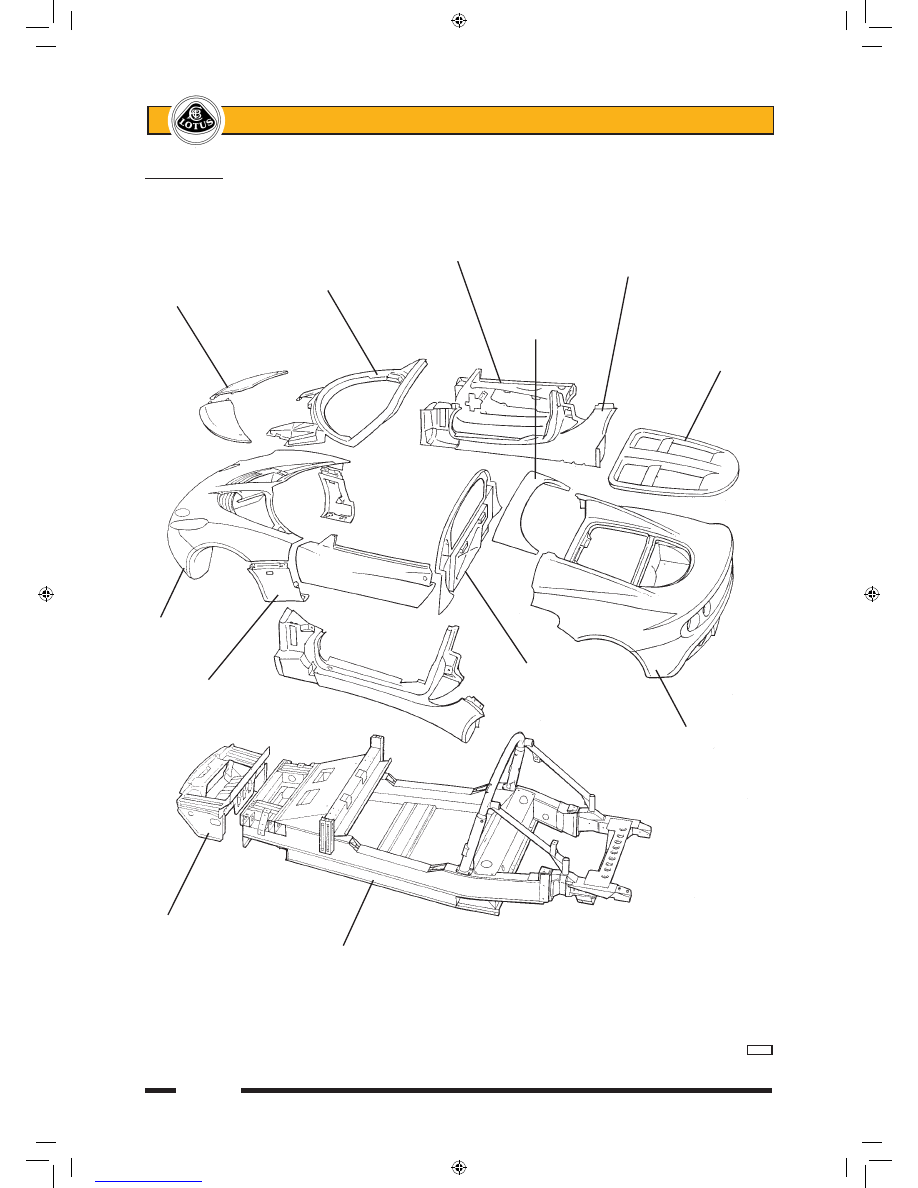Lotus Elise / Lotus Exige. Instruction - part 7

Page 2
Lotus Service Notes
Section BQ
Body Panels
Door
shell
Windscreen Sill panel
Front access frame
panel Rear
window
shroud
Engine
cover lid
Front
clamshell
Cabin rear
Door hinge bulkhead
cover panel
Rear clamshell
Front crash
structure
Chassis frame
b277b
sn_bq_cyclone.indd 2
03/03/2006 10:53:38